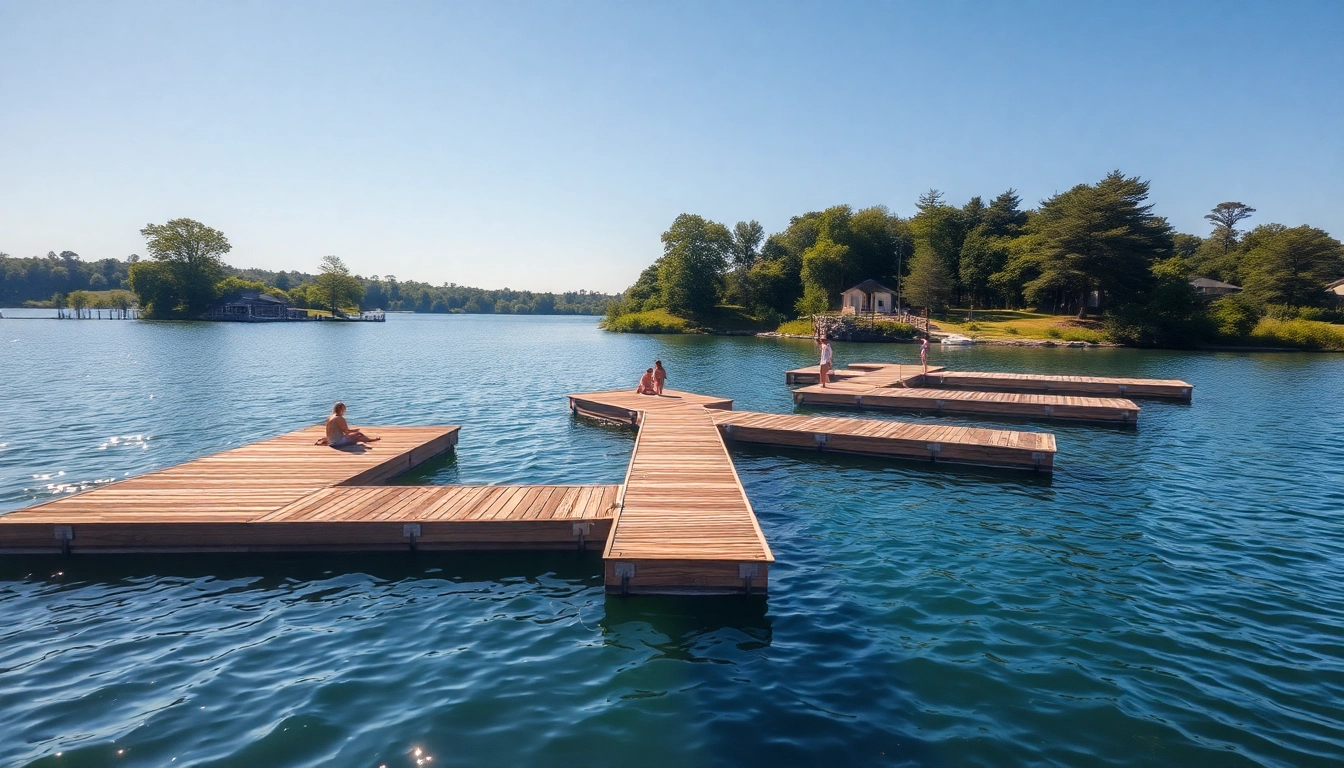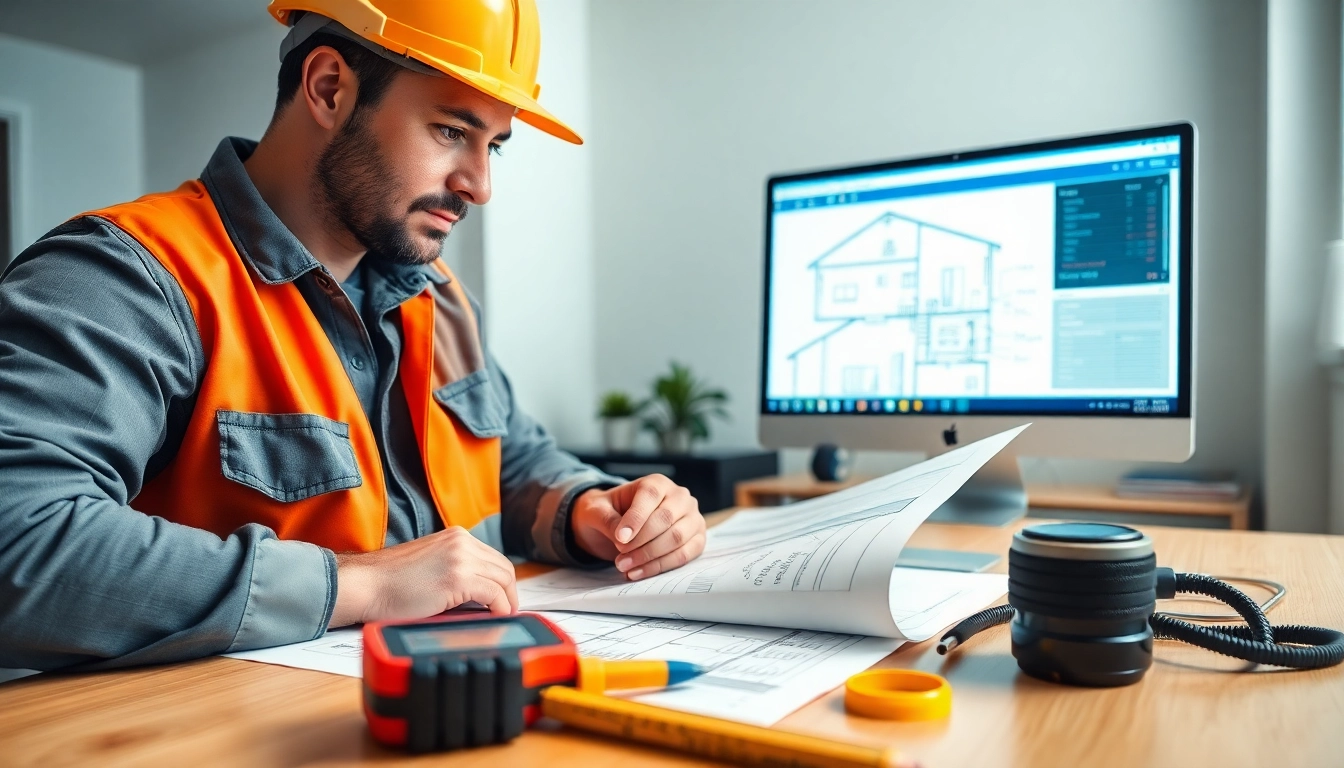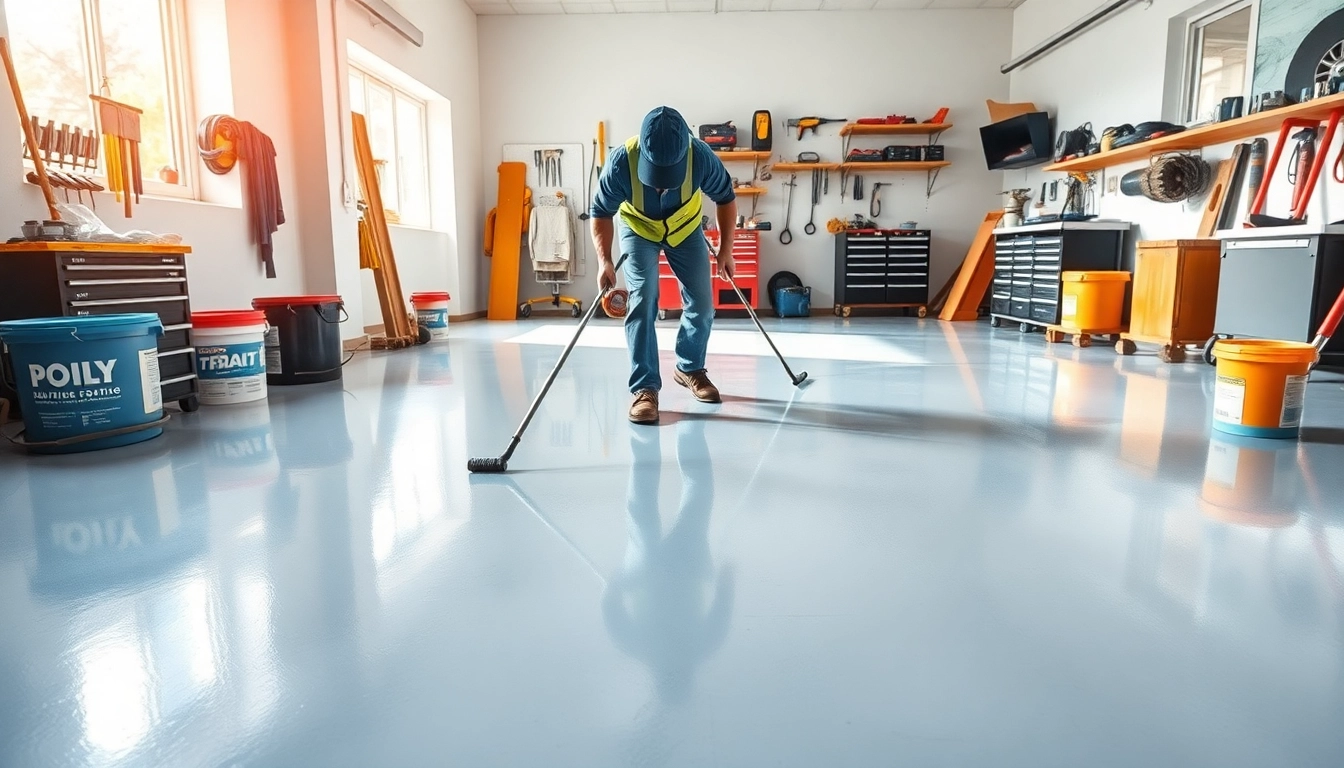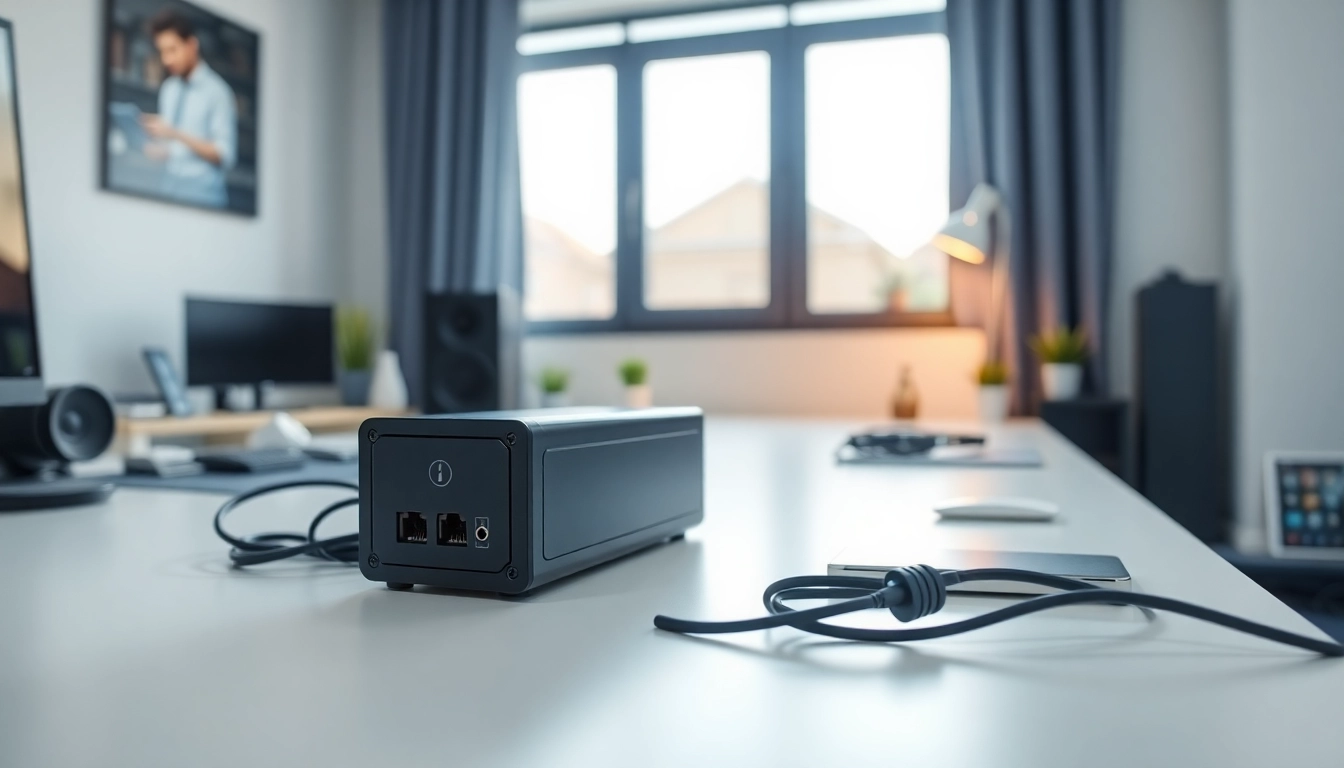
Understanding Floating Docks
What Are Floating Docks?
Floating docks are innovative platforms designed to provide a safe and stable area for boats and watercraft while adapting effortlessly to changing water levels. Unlike traditional docks, which can be anchored to the shoreline or seabed, floating docks remain buoyant, enabling them to rise and fall with the tide or lake levels. They are typically made from a combination of materials, including high-density polyethylene (HDPE), concrete, or wood, and are available in various configurations to suit different waterfront needs. The versatility of floating docks makes them an essential asset for residential, commercial, and recreational use.
Benefits of Using Floating Docks
The advantages of floating docks extend far beyond their simple function. Their design allows for numerous benefits including:
- Increased Versatility: Floating docks can be easily customized to fit a variety of watercraft, from small kayaks to large yachts.
- Minimal Environmental Disruption: They require less invasive installation techniques, preserving the local ecosystem and reducing shoreline erosion.
- Enhanced Stability: Their buoyant design provides a more stable platform even in choppy waters, ensuring safer loading and unloading of boats.
- Easy Accessibility: Floating docks are generally more accessible than traditional docks, facilitating easier use for individuals of all ages and capabilities.
- Long Lifespan: Made from durable materials resistant to water and UV damage, floating docks can last several years with the right maintenance.
Types of Floating Docks
Understanding the types of floating docks can aid in selecting the right one for your specific requirements. The primary types include:
- Modular Floating Docks: These docks consist of interlocking sections that can be configured to meet your specific needs. They can be expanded or reconfigured easily, ideal for growing waterfront requirements.
- Freestanding Floating Docks: As the name suggests, these docks stand alone and can be anchored in place. They are suitable for a variety of applications, including residential and commercial settings.
- Boat Lift Docks: Designed specifically for storing and lifting boats out of the water, these docks include integrated boat lifts that can accommodate larger watercraft and extend the boat’s lifespan.
- Floating Piers: More substantial than traditional docks, floating piers are often used for commercial applications like marinas or public access points.
Designing Your Floating Docks
Key Considerations in Dock Design
Creating a functional and aesthetically pleasing floating dock requires thoughtful planning and design. Some key considerations include:
- Water Depth: Assess the water depth in the area where the dock will be installed. This will impact the design and necessary materials.
- Weather Conditions: Consider local weather patterns, including winds and waves, which could affect dock stability and performance.
- Usage Requirements: Determine how the dock will be used. Will it primarily host boats, or will it include recreational areas for fishing and lounging?
- Regulations and Permits: Research local regulations and necessary permits for dock construction to ensure compliance with environmental and zoning laws.
Materials Used for Floating Docks
The selection of materials plays a significant role in the longevity and performance of floating docks. Common materials include:
- High-Density Polyethylene (HDPE): Highly resistant to impacts and UV radiation, HDPE is a popular choice for floating dock surfaces due to its low maintenance requirements.
- Concrete: For those seeking durability and stability, concrete may be used, although it requires more structural support and can be more costly.
- Wood: Traditional wooden floating docks provide an aesthetically pleasing option but may require more maintenance to prevent rot and warping.
Aesthetic Enhancements for Floating Docks
Many dock owners seek to enhance the visual appeal of their floating docks. A few popular enhancements include:
- Rubberized Coatings: Applying a rubberized coating can provide a safe, slip-resistant surface while enhancing traction.
- Lighting: Strategic lighting not only improves safety during evening hours but also adds ambiance.
- Landscaping: Integrating landscaping elements can blend the dock with the surrounding environment, creating a seamless transition from land to water.
Installing Floating Docks
Preparing Your Site for Floating Docks
Before installation, proper site preparation is crucial for the functionality and durability of floating docks. Steps include:
- Site Assessment: Evaluate the location for water depth, currents, and potential environmental impacts.
- Clearing the Area: Remove any debris, rocks, or unnecessary vegetation that may obstruct or interfere with the dock installation.
- Marking Dock Placement: Use stakes or temporary markers to outline the intended position of the floating dock.
Step-by-Step Installation Guide
Installing floating docks involves several steps, which can vary depending on the dock type, but generally include:
- Assembly: If using modular components, assemble sections of the dock according to the manufacturer’s instructions.
- Anchoring: Secure the dock using appropriate anchoring methods, such as cables or submerged anchors, to prevent drifting.
- Final Adjustments: Once the dock is in place, make any necessary adjustments to ensure stability and accessibility.
- Inspection: Conduct a thorough inspection to test the dock’s integrity and functionality.
Safety Measures During Installation
Ensuring safety during installation is paramount to preventing accidents and damage. Key safety measures include:
- Personal Protective Equipment (PPE): Ensure all personnel wear appropriate PPE, including gloves and life jackets.
- Tool Safety: Use tools properly and ensure they are in good working condition to prevent injuries.
- Supervision: Have a knowledgeable supervisor oversee the installation process to manage risks effectively.
Maintaining Floating Docks
Routine Maintenance Tips
Regular maintenance is vital for extending the lifespan of floating docks. Effective maintenance practices include:
- Inspections: Routinely inspect the dock for damage, wear, and signs of rot or corrosion, especially after extreme weather events.
- Cleaning: Remove debris, algae, and barnacles to maintain the dock’s integrity and appearance.
- Repairs: Address any identified issues promptly to prevent further damage and ensure safety.
Identifying Common Problems
Floating docks may encounter a range of issues over time. Common problems include:
- Structural Damage: Cracks or breaks may occur due to extreme weather or heavy use; prompt repair is crucial.
- Buoyancy Issues: Waterlogged floats can lead to instability; replacing or repairing compromised floats expedites recovery.
- Algae Growth: If left unchecked, algae can create slippery surfaces, increasing the risk of falls; regular cleaning routines can mitigate this issue.
Long-Term Care for Floating Docks
To extend the lifespan and performance of floating docks, consider the following long-term care strategies:
- Seasonal Preparation: Before winter or severe weather, prepare the dock by removing accessories and ensuring all components are secured.
- Storage: When the dock is not in use, storing it on land or in a designated area can prolong its life.
- Regular Upgrades: Consider periodic upgrades or replacements of components, such as fenders or floats, to keep the dock functioning optimally.
Choosing the Right Floating Docks for Your Needs
Evaluating Your Waterfront Space
Your first step in selecting a floating dock should be a comprehensive evaluation of your waterfront space. Factors to consider include:
- Size and Shape: Analyze the dimensions of the area where the dock will be placed, ensuring enough space for both the dock and the watercraft.
- Water Conditions: Understand the depth, current strength, and presence of obstacles in the chosen area.
- Access Points: Consider how users will access the dock from the land side and ensure easy connectivity.
Customization Options for Floating Docks
Many dock manufacturers offer a range of customization options to cater to specific client needs, including:
- Additional Accessories: Options for integrating solar lights, ladders, and storage boxes adds functionality.
- Color and Aesthetics: Choose from various colors and surface finishes to create a dock that complements your décor.
- Size Variations: Customize the size of the dock sections to meet personal or commercial usage needs.
How to Select the Best Provider for Floating Docks
Choosing the right provider for floating docks is critical to ensuring a quality product and service. Consider the following factors:
- Reputation: Research the provider’s history, client testimonials, and market reputation to ensure reliability.
- Product Range: A provider should offer a variety of floating dock options and customization possibilities to capture your unique requirements.
- Support and Warranty: Ensure the provider offers solid customer support and a reasonable warranty on their products, safeguarding your investment.







